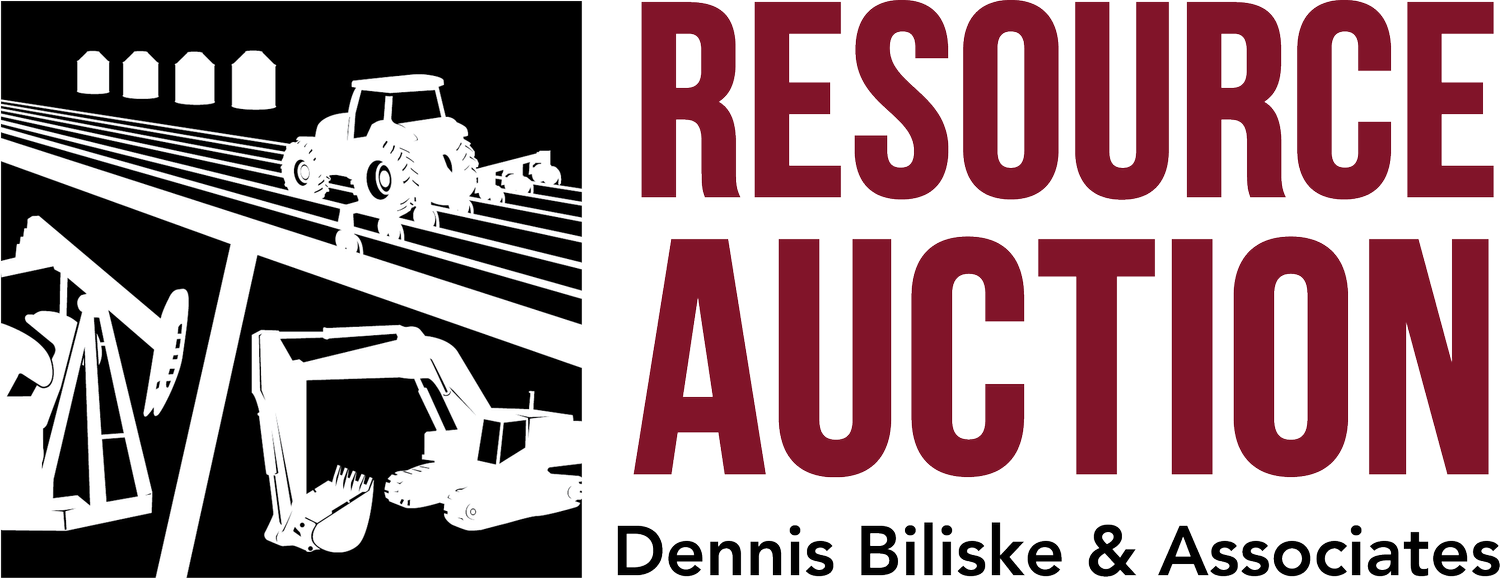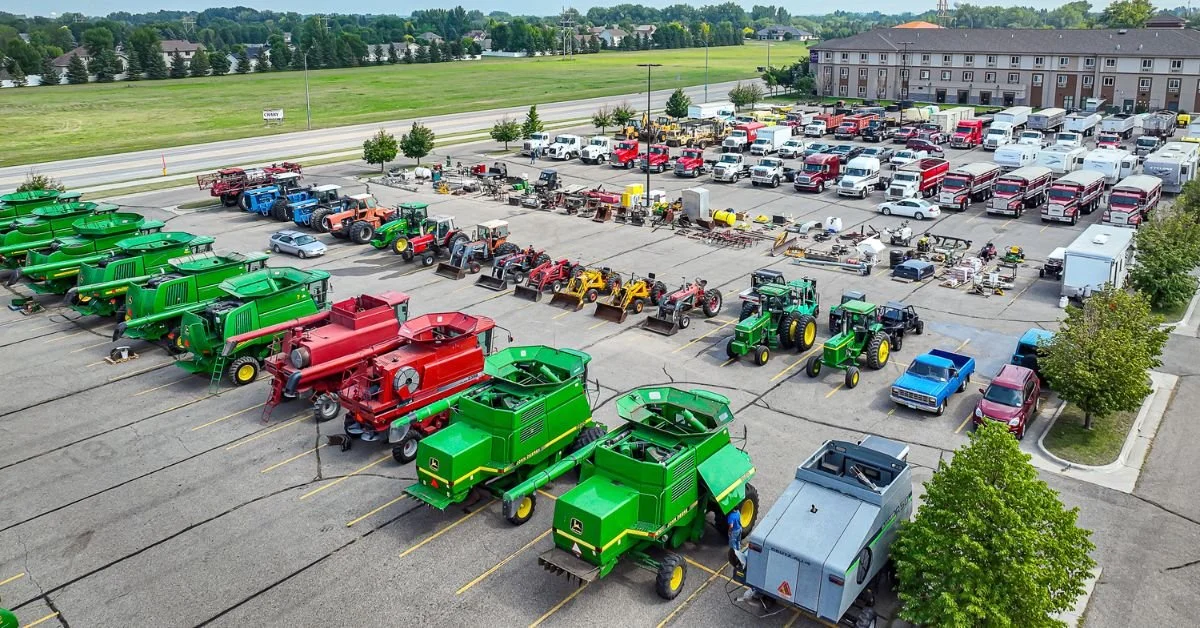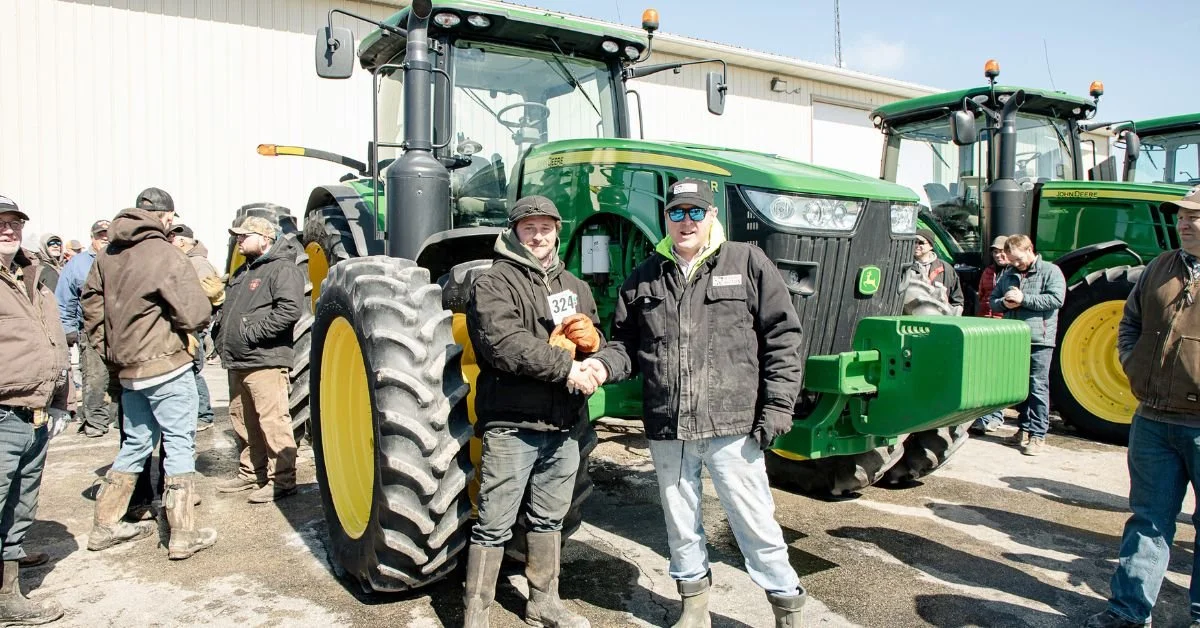Explained: How Farm Retirement Auctions Work
Retiring from farming is more than just closing a chapter; it’s securing the legacy built over generations. Farm retirement auctions offer a clear, efficient way to turn land, equipment, and assets into lasting financial security. With the right strategy, farmers can step into retirement with confidence and peace of mind. At Resource Auction, we’ve helped hundreds of retiring farmers successfully transition through farm machinery auctions.
For many retiring farmers, navigating this transition can be quite challenging. That’s why we’ve put together this informative guide that explores the ins and outs of farm retirement auctions. By the end, you’ll have a comprehensive understanding of how these auctions work and why they are a valuable option for farmers looking to retire.
What Exactly Are Farm Retirement Auctions?
Simply put, farm retirement auctions are specialized events where retiring farmers sell their agricultural assets. Unlike estate auctions or liquidation sales, which often occur due to unforeseen circumstances or financial distress, retirement auctions are typically planned events designed to facilitate a smooth transition for the farmer. These auctions focus on maximizing the value of the assets being sold while also reducing the complexities involved in the selling process.
The assets typically sold at farm retirement auctions can vary widely. Common items include agricultural machinery, vehicles, livestock, and even real estate. For example, Resource Auction often handles retirement auctions that include both equipment and farmland. The primary goal is to liquidate these assets efficiently, providing the retiring farmer with a financial return that supports their retirement plans.
Reasons Farmers Opt for Retirement Auctions
Retiring farmers often choose auctioning as their preferred method for selling assets for several reasons. Firstly, auctions can simplify the selling process by consolidating all sales into a single event, reducing the time and effort required to sell each item individually. This approach can be particularly appealing when managing large quantities of equipment and machinery.
Another key motivation is the potential to maximize financial returns. Auctions can create a competitive bidding environment, often driving up prices and ensuring that assets sell at their market value. This result can be more financially rewarding compared to private sales or other methods of asset liquidation.
Beyond logistics and financial considerations, there are emotional and practical factors that come into play. For many farmers, their equipment might hold sentimental value. Auctions offer a structured and dignified way to part with these assets, providing closure as individuals transition into retirement. Additionally, the auction process can also alleviate the stress of negotiating with multiple buyers, allowing farmers to focus more on their future plans.
The Auction Process: Step-by-Step
Organizing a successful auction requires careful planning and understanding of the process. This step-by-step guide highlights the key stages involved, ensuring both smooth execution and maximum value for the assets being sold.
Step 1: Planning and Preparation
The first step in the auction process involves thorough planning and preparation. Retiring farmers typically begin by hiring an experienced auction company that specializes in agricultural sales. These professionals bring expertise and resources to ensure a successful auction. Next, farmers need to inventory their assets, identifying what they plan to sell. This step is crucial for organizing and cataloging items, which aids in marketing efforts. Resource Auction specialists assist with cataloging and marketing each item.
Setting a date and location for the auction is another critical aspect of planning. Farmers should choose a date that allows sufficient time for preparation and marketing. The location should be accessible to potential buyers as well (unless the auction occurs online).
Step 2: Marketing the Auction
Effective marketing is essential to attract the right audience to the auction. Auctioneers often use a combination of local advertising, online listings, and targeted outreach to reach potential buyers. This marketing strategy ensures that other farmers, equipment dealers, and interested parties are aware of the auction and its available assets.
Step 3: Auction Day
The auction itself can happen in person, online, or as a hybrid of both. The auction company facilitates the event and encourages competitive bidding. Their expertise ensures that the auction runs smoothly and that an accurate assessment is conveyed regarding items’ potential value.
Step 4: Post-Auction
After the auction concludes, the focus shifts to finalizing sales and payments. Successful bidders complete transactions, while the auctioneer manages the distribution of funds to the retiring farmer. The retiree will have to address any unsold items by negotiating with interested buyers or planning for future sales or auctions. Our team ensures all transactions are finalized securely and efficiently.
Types of Auctions Used in Farm Retirement
When it comes to farm retirement auctions, choosing the right type of auction is crucial to ensuring the best possible outcome. We’ve already touched on these briefly, but we wanted to cover each in more detail since they’re an essential aspect of how farm retirement auctions work. Below are the most common types of auctions used in this process.
In-Person Auctions
In-person auctions are the traditional, live events where potential buyers gather at a specific location to bid on items. This format creates a dynamic and competitive atmosphere.
A key benefit of a live auction is that it allows bidders to physically inspect the equipment firsthand, giving them confidence in what they are bidding on. The immediate, real-time nature of the bidding process is exciting, but these auctions can be limited by their geographical reach, as only those who can travel to the auction site can participate.
Online Auctions
With the rise of digital technology, online farm machinery auctions have become a popular and convenient option. These auctions are hosted entirely on the internet, allowing bidders to participate from anywhere in the world. This significantly broadens the potential buyer pool, which can lead to more competitive bidding and better prices.
The main drawback is the inability for bidders to physically inspect the items, which may deter some who prefer to see equipment in person before making a purchase. However, if you provide enough detailed pictures and descriptions, it can put many bidders’ minds at ease.
Hybrid Auctions
Combining the best of both worlds, hybrid auctions blend the elements of live and online formats. These events are conducted with an in-person crowd while also allowing online participants to bid in real time.
This approach maximizes participation by attracting both local buyers who want to inspect items and remote bidders who value convenience. Hybrid auctions offer the greatest flexibility and exposure, making them an excellent choice for reaching the widest possible audience, but they can be more difficult to manage.
Key Considerations for Farmers
Retiring farmers should carefully choose their auction company, as their expertise can greatly influence the auction’s success. Understanding fees and commissions is a key part of this to ensure transparency and effective budgeting.
Preparing assets for sale is another important step. This preparation might include cleaning, making necessary repairs, and ensuring proper documentation is available to potential buyers. Finally, setting realistic expectations for pricing can help manage outcomes and ensure satisfaction with the auction results.
By understanding these key elements, retiring farmers can approach farm retirement auctions with confidence, utilizing them as a strategic tool to transition smoothly into the next phase of their lives. At Resource Auction, we’ll help with this by guiding sellers through every detail—from preparation to final settlement.



